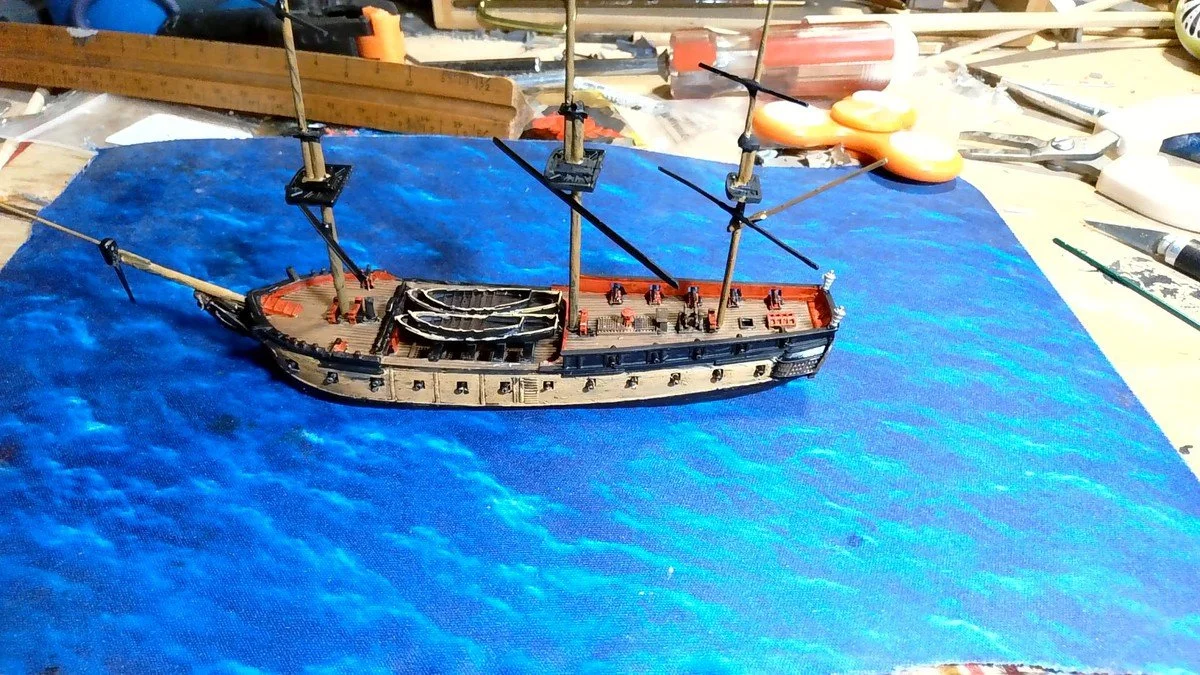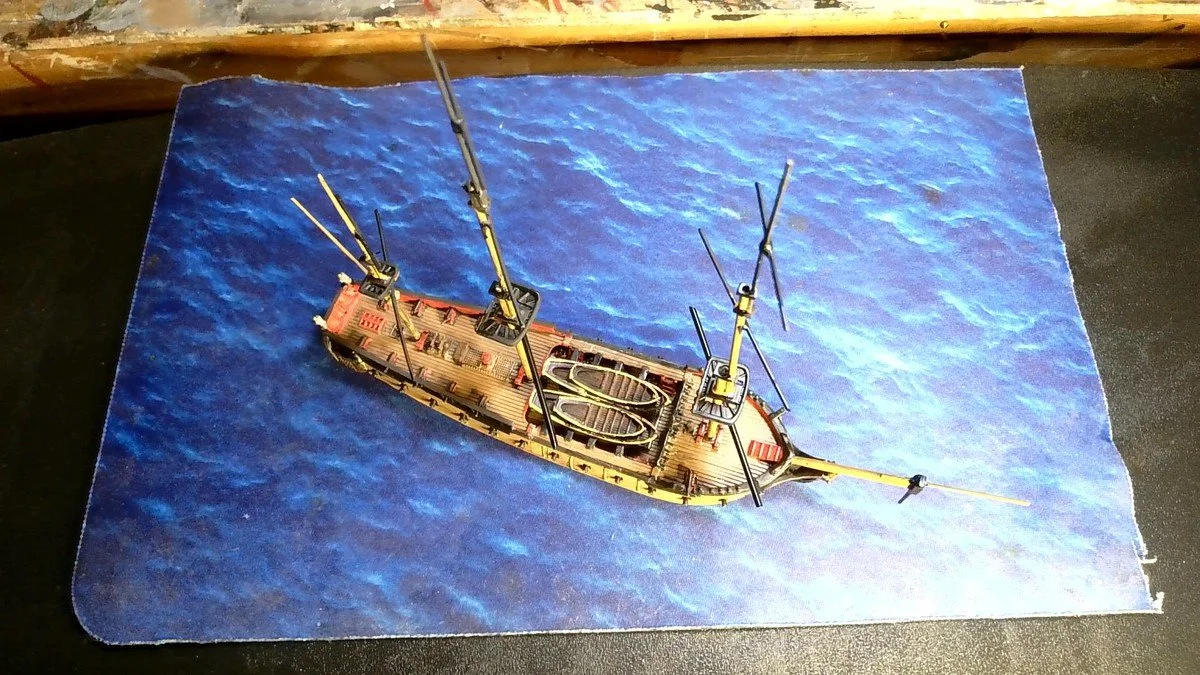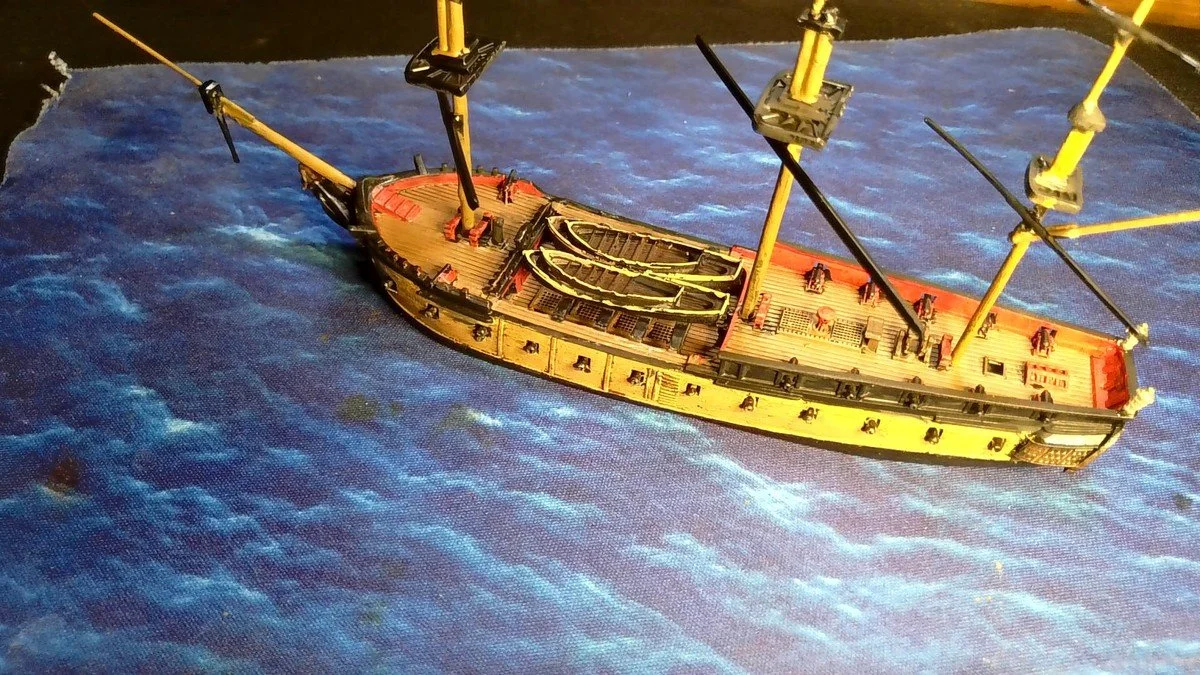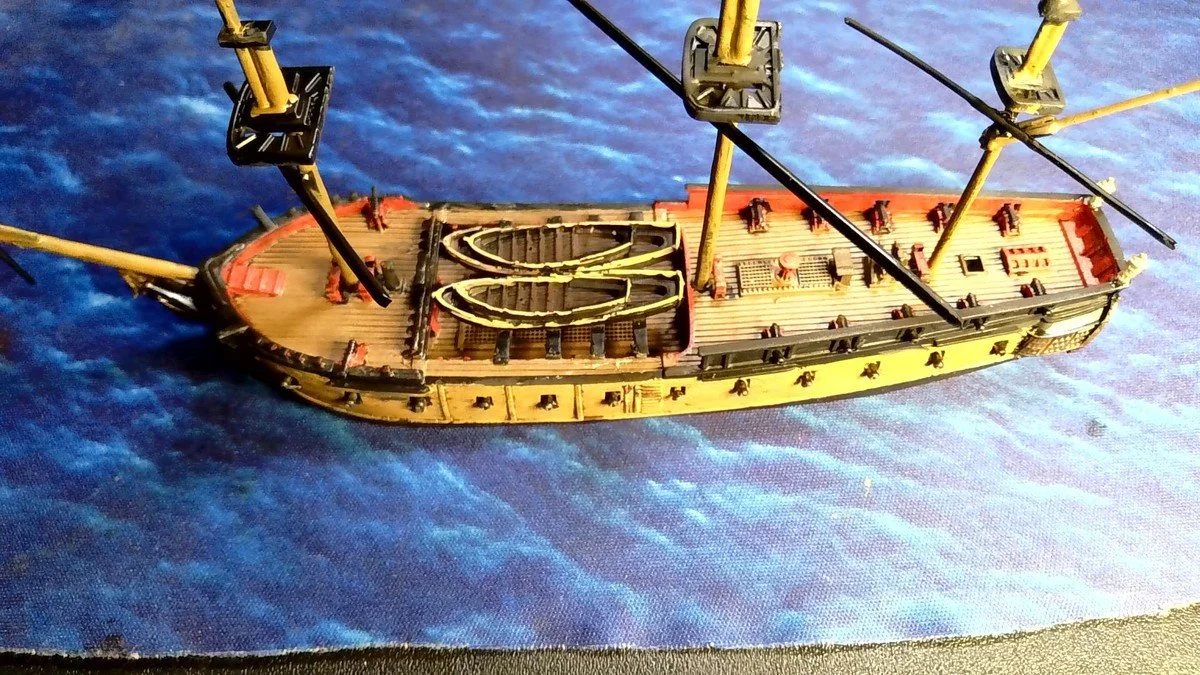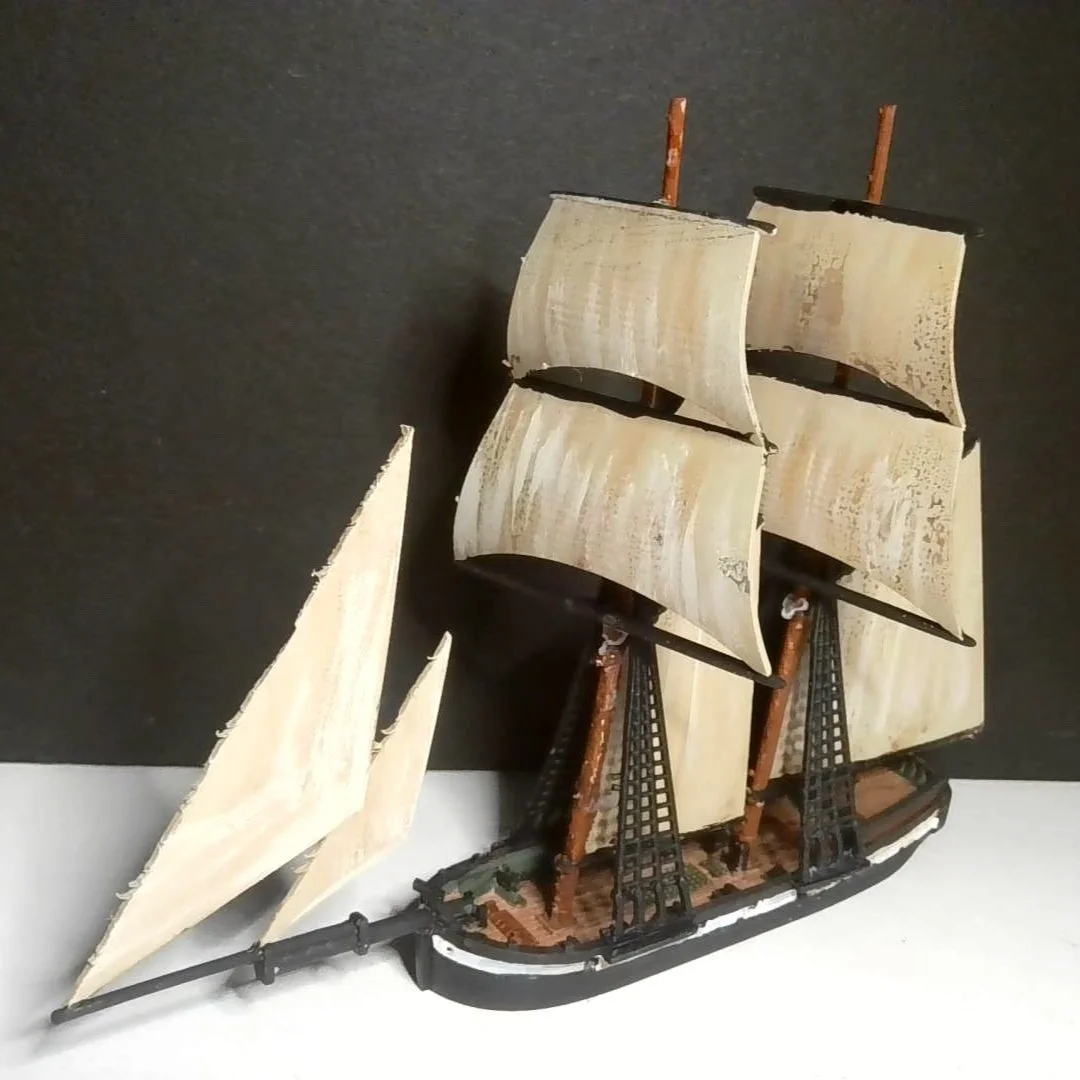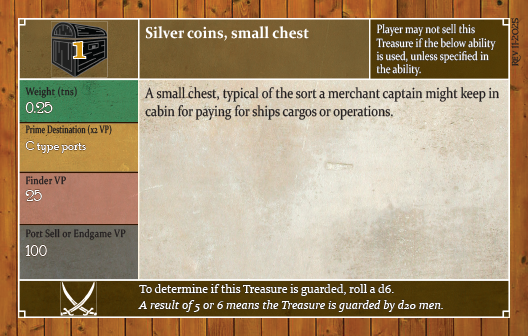36 Gun Frigate (6mm)
36 Gun Frigate (6mm)
When the navy designers initially created the 5th rate, they had two decks, but they found lower decks to be hard to arm, as the guns were too close to the waterline to be operated in rolling seas. Fifth Rates were never included among ships-of-the-line as they were too small. The middle of the 1700’s saw the introduction of a new fifth-rate type—the classic frigate, with no ports on the lower deck, and the main battery disposed solely on the upper deck, where it could be fought in all weathers.
These Fifth-rate frigates served as fast scouts or independent cruisers, or sometimes ran in small squadrons and included a variety of gun arrangements with crews of 215 to 294 men.
To be posted aboard a fifth-rate ship was considered an attractive assignment. Fifth rates were often assigned to interdict enemy shipping, offering the prospect of prize money for the crew. Fifth-rate frigates were considered useful for their combination of maneuverability and firepower and were commonly used in patrol and to disrupt the enemy.
These models are designed to represent a typical 5th rate frigate of the 1700’s. These frigates featured 32 to 36 guns and depending on the year would mount 12 pounders or in later cases 18 pounders. Their quarter decks would be armed with smaller 6 pounder guns.
Version A - Lady figurehead
Version B - Lion figurehead (2 less quarter deck guns and 2 extra gun deck guns)
These models are designed to work with Sailpower, or any other naval wargames needing 1/300 6MM scale models. They are 3D printed in SLA resin with masting constructed from wood dowel and floral wire. They come unpainted and unassembled.
This model features 3D printed parts: There are two types of 3D printed parts we use in our products. "FDM" is lower cost, and is what most would recognize as traditional 3D printing. This type of model printed in layers from thermal plastic (generally PLA or PETG), and is lightweight with reasonable detail but will have visible striation (or lines) that the hobbyist may want to clean up using putty, primer, or other hobby techniques. "SLA" is a laser cured photo-resin that has exceptional detail, and generally has a much smoother finish without significantly noticeable striation. This type of material is more expensive, and fine details can be more delicate.
Some models may use either or both types of parts, and some models may have the ability for the buyer to select the print type under print options. These models are intended to be painted and may come in different colors.

